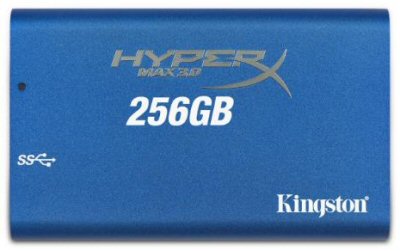- Details
- Flash Memory
The CompactFlash Association (CFA) today announced the formation of a new working group to develop a next-generation memory card. Nikon, SanDisk and Sony proposed the new format in order to meet the needs of professional type digital single lens reflex camera (DSLR) and professional video markets over the coming years. CFA members can join the new workgroup for considering the ratification of the new specification.
Sophisticated imaging applications such as High Definition video and professional photography require a new generation of memory cards with cutting-edge speeds and capacities capable of processing the larger file sizes. The development of the new card is designed to meet the future demands of professional imaging and video markets.
“Future professional photography and video applications will require memory cards with faster read/write speeds,” said Mr. Shigeto Kanda of Canon and the CFA chairman of the board. “The development of a new high-performance card standard with a serial interface will meet the needs of the professional imaging industry for years to come and open the door for exciting new applications.”
- Details
- Flash Memory
SanDisk Corporation, Nikon Corporation and Sony Corporation today announced the joint development of a set of specifications that addresses the future requirements of professional photography and video markets. The three companies proposed the specifications to the CompactFlash® Association (CFA), the international standards organization, with the intent to standardize the format.
Professional photography and High Definition (HD) video applications require a new generation of memory cards capable of processing significantly larger files. To address the imaging industry’s future speed and capacity demands, SanDisk, Nikon and Sony proposed a new card specification whose performance and storage capabilities surpass those of existing memory cards. Once accepted, the new format will enable exciting new possibilities in the professional imaging and video markets.
The proposed specifications achieve data transfer rates of up to 500 megabytes per second (MB/sec) (theoretical maximum interface speed) using the highly versatile PCI Express interface. The increased speeds will enable imaging and video applications that could not be accomplished using the current CompactFlash specification’s Parallel ATA (PATA) interface. CF6.0, released in November 2010, offers maximum performance of up to 167MB/sec.
- Details
- Flash Memory
ADATA Technology, after listening attentively to the voice of the market, ADATA has launched a new product in its Superior series of flash drives, the S101. Produced under advanced COB (Chip On Board) manufacturing processes, the S101 is a compact and delicate technological jewel. High quality black leather exterior with a unique and comfortable toothed texture allows you to manifest your personal sense of elegance, at a price the stays true to your sense of moderation.

This new addition to the superior series has a smaller profile due to the COB manufacturing used. With a length of only 3.3 cm, and width of 1.6 cm, the S101 is more compact than traditional USB flash drives, and as small and exquisite as a Bluetooth headset.
- Details
- Flash Memory
ADATA Technology, the worldwide leader in DRAM modules and flash memory products, today released its latest Micro Memory Card Reader, the microReader version III, an ultra-compact and stylish solution for easy and convenient data transfers between mobile phones and PCs via High-Speed USB 2.0 interface.

For users of digital devices who are constantly on the go, moving and sharing personal files from memory-enabled phones to other devices can be a hassle when there is no USB cable on hand. Weighing just 3 grams, and the size of a small coin, the new ADATA microReader is one of the smallest card readers available on the market, with incredible portability that provides the freedom of data transfers any time, any place. Due to its ultra-compact size, the microReader can be plugged into the USB slot of a notebook PC at all times, without blocking the neighboring slots or getting in the way when the computer is stowed in a bag.
Unlike most conventional memory card readers, which have unfriendly card retrieval designs, the microReader features a patented one-push card-ejector that makes any data transfer a fast and pleasant experience. Available in elegant black and passionate red colors, the microReader features a stylish LED indicator that shines brightly when the device is in use.
- Details
- Flash Memory
Kingston Digital today announced the HyperX MAX 3.0 External USB 3.0 Drive. Shipping in December, the SuperSpeed USB certified HyperX MAX 3.0 drive is a fast and durable external USB 3.0 storage drive. SuperSpeed USB is the specification delivering USB 3.0 transfer speeds up to 10 times faster than USB 2.0.

Kingston's HyperX MAX 3.0 has a read speed of up to 195MB/sec., and a write speed of up to 160MB/sec., when paired with a USB 3.0 compatible device. It is also fully compatible with USB 2.0 devices, as the speed defaults back to USB 2.0 capability. During internal testing, a 10GB movie file was transferred in only 1 minute, 12 seconds to the HyperX MAX 3.0 from a USB 3.0 system. The transfer time increased to 5 minutes, 52 seconds using a USB 2.0 port with the same test bed.
HyperX MAX 3.0 is an excellent drive solution for any prosumer, computer enthusiast or professional requiring extremely fast file transfer to their PC with portability requirements. Moving or backing up HD video, RAW images or other large project files are examples that can take advantage of the extremely high-speed data transfers of the USB 3.0 interface.

